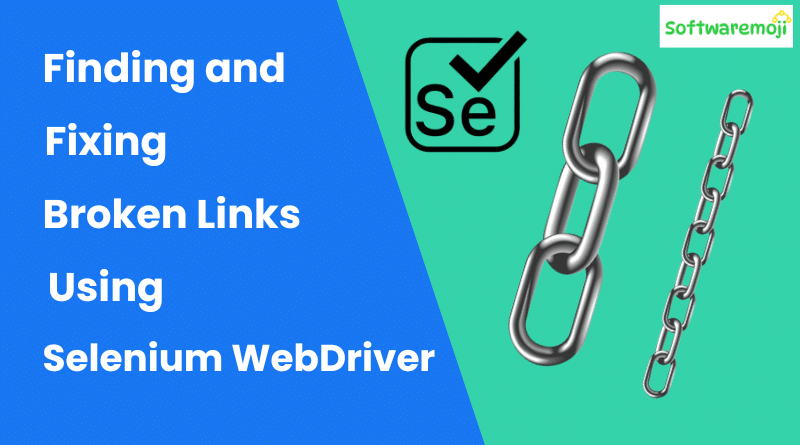
✅Finding and Fixing Broken Links:
- Enhances Crawlability – Fixing broken links ensures search engine bots can effectively crawl and index your website.
- Reduces Lost Traffic – Broken links can lead to lost visitors; fixing them helps retain traffic and improve conversions.
Automating File Upload and Download in Selenium WebDriver:
✅Introduction:
In the digital landscape, broken links can be a major roadblock to user experience and SEO performance. These are hyperlinks that do not lead to a valid destination, either due to a server error, incorrect URL formatting, or removed resources. Broken links can negatively impact website rankings, user engagement, and overall credibility. Automated testing using Selenium can help detect and fix these issues efficiently. In this guide, we’ll explore how to find broken links using Selenium WebDriver and Java, ensuring a smooth browsing experience for users.
✅Why Should You Check for Broken Links?
Checking for broken links is essential for multiple reasons:
- User Experience: Navigating through non-functional links frustrates users and increases bounce rates.
- SEO Impact: Search engines like Google penalize websites with too many broken links, reducing their ranking.
- Website Credibility: A website with broken links looks unprofessional and unreliable.
- Conversion Rates: If users cannot access the intended pages, potential conversions are lost.
- Maintenance Efficiency: Regular automated checks make it easier to maintain the site’s link integrity.
✅Understanding HTTP Status Codes:
Every link has an associated HTTP status code that determines its validity:
- 2xx (Success): The URL is valid and accessible.
- 3xx (Redirects): The URL is redirected to another location.
- 4xx (Client Errors): The URL is not found or is forbidden.
- 5xx (Server Errors): The server is down or unable to process the request.
✅How to Identify and Fix Broken Links Using Selenium:
To automate the detection of broken links, follow these steps:
✅Step 1: Set Up Selenium WebDriver:
Ensure that you have Java, Selenium WebDriver, and the appropriate browser driver installed.
✅Step 2: Collect All Links on a Webpage:
Using Selenium, extract all links that are present within <a> tags.
List<WebElement> links = driver.findElements(By.tagName("a"));✅Step 3: Validate URLs:
Loop through the links, retrieve their href attributes, and filter out null or empty URLs.
for (WebElement link : links) {
String url = link.getAttribute("href");
if (url == null || url.isEmpty()) {
System.out.println("Empty URL detected.");
continue;
}
}✅Step 4: Check If the URL Belongs to the Same Domain:
Exclude external links from the validation process to focus only on internal links.
if (!url.startsWith("https://example.com")) {
System.out.println("Skipping external link: " + url);
continue;
}✅Step 5: Send HTTP Requests and Analyze Responses:
Using HttpURLConnection, send a request to each URL and capture the response code.
try {
HttpURLConnection connection = (HttpURLConnection) new URL(url).openConnection();
connection.setRequestMethod("HEAD");
connection.connect();
int responseCode = connection.getResponseCode();
if (responseCode >= 400) {
System.out.println(url + " is a broken link");
} else {
System.out.println(url + " is a valid link");
}
} catch (Exception e) {
e.printStackTrace();
}✅Step 6: Automate the Process for Multiple Pages:
Run the script on different pages dynamically to cover the entire website.
- Improved User Experience – Fixing broken links ensures smooth navigation, reducing bounce rates and enhancing user satisfaction.
- Boosts Website Authority – A well-maintained website with no dead links builds trust and credibility with search engines and users.
✅Finding and Fixing Broken Links Complete Selenium Script to Detect Broken Links:
import java.io.IOException;
import java.net.HttpURLConnection;
import java.net.URL;
import java.util.List;
import org.openqa.selenium.By;
import org.openqa.selenium.WebDriver;
import org.openqa.selenium.WebElement;
import org.openqa.selenium.chrome.ChromeDriver;
public class BrokenLinksChecker {
public static void main(String[] args) {
System.setProperty("webdriver.chrome.driver", "path_to_chromedriver");
WebDriver driver = new ChromeDriver();
driver.get("https://example.com");
List<WebElement> links = driver.findElements(By.tagName("a"));
for (WebElement link : links) {
String url = link.getAttribute("href");
if (url != null && !url.isEmpty()) {
checkLink(url);
}
}
driver.quit();
}
public static void checkLink(String url) {
try {
HttpURLConnection connection = (HttpURLConnection) new URL(url).openConnection();
connection.setRequestMethod("HEAD");
connection.connect();
int responseCode = connection.getResponseCode();
if (responseCode >= 400) {
System.out.println(url + " is a broken link");
} else {
System.out.println(url + " is a valid link");
}
} catch (IOException e) {
System.out.println("Error checking link: " + url);
}
}
}✅Finding and Fixing Broken Links Additional Considerations:
- Handling Redirections: If a website uses too many redirects, check for loops and update outdated URLs.
- Performance Optimization: Running tests in parallel can speed up link checking on large websites.
- Error Logging: Store broken link reports in a log file for easy debugging.
- Continuous Monitoring: Implement the script in CI/CD pipelines for regular website health checks.
✅Finding and Fixing Broken Links Conclusion:
By automating broken link detection using Selenium, you can efficiently maintain website integrity, enhance user experience, and improve SEO rankings. This process helps identify faulty links before they affect your visitors, ensuring that your website remains error-free and fully functional. Regularly monitoring and fixing broken links will contribute to a seamless browsing experience and a more robust online presence.
